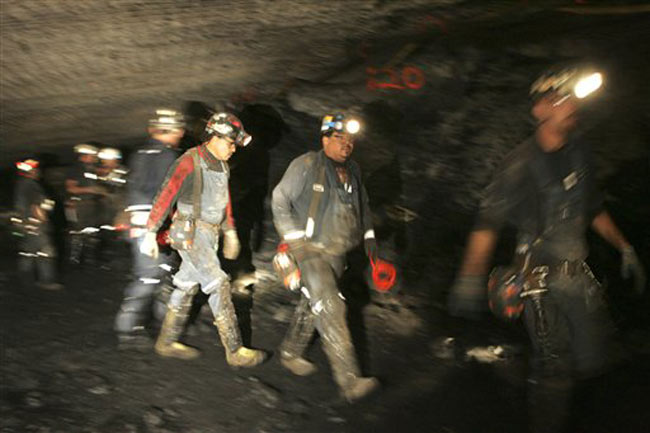Mine Collapses Not Caused by Earthquakes, Seismologists Insist

The mine collapse last night that killed and injured rescuers at a Utah coal mine generated seismic waves that reveal the event was a collapse and not a natural earthquake, seismologists say.
And increasingly strong evidence also supports the claim that the magnitude-3.9 seismic event that initially trapped six miners on Aug. 6 was the mine collapse itself and also not a natural earthquake, say seismologists at the University of Utah.
The University Seismograph Stations recorded a magnitude-1.6 event at about 6:39 p.m. local time (8:39 p.m. Eastern Daylight Time) yesterday, which experts say was caused by a "mountain bump," in which ground shifting sent chunks of rocks from the mine walls. Characteristics of the seismic waves indicated downward motion, which is consistent with further settling and collapse within the mountain where the Crandall Canyon mine is located.
Seismologists say such a "mountain bump" is also responsible for the collapse that trapped the miners more than three miles down in the central part of the Utah mine. The earth-shaking that occurred at the time of the original mine collapse (2:48 a.m. local, 4:48 a.m. EDT, Aug. 6), as well as "after-events," also indicate downward motion, which is not characteristic of motion generated by natural or "tectonic" earthquakes, said Relu Burlacu, network manager for the University of Utah Seismograph Stations.
This information backs up what seismologists already call strong evidence pointing to the mine collapse itself causing the seismic spikes and not a natural earthquake .
"These events seem to be related to the ongoing settling of the rock mass following the main collapse on Aug. 6," Burlacu said.
Unlike natural earthquakes, the seismic "bump" Thursday night was very shallow. Initial recordings indicating it was less than one-tenth of a mile deep, but considering uncertainties in determining depths of such seismic events, it is more conservative to say the shaking began less than a mile underground, Burlacu said.
Get the world’s most fascinating discoveries delivered straight to your inbox.
In any case, either depth is quite unlike natural earthquakes, which typically originate deeper.
The number of "after-events" detected within two miles of the mine as of this morning was 22, of which 12 were recorded on Aug. 6 and Aug. 7.
The University Seismograph Stations installed five new seismometers near the mine, which now are detecting more of the small seismic after-events and waves.
Walter Arabasz, director of the University of Utah Seismograph Stations, examined years of seismic data in the arc-shaped area in eastern Utah where coal mining takes place. His results showed that less than 2 percent of all seismicity in the region can be linked with tectonic earthquakes. The remaining 98 percent is caused by mining activity.
After last evening's cave-in, all rescue workers were evacuated from the mine and underground work came to a halt there.
Jeanna Bryner is managing editor of Scientific American. Previously she was editor in chief of Live Science and, prior to that, an editor at Scholastic's Science World magazine. Bryner has an English degree from Salisbury University, a master's degree in biogeochemistry and environmental sciences from the University of Maryland and a graduate science journalism degree from New York University. She has worked as a biologist in Florida, where she monitored wetlands and did field surveys for endangered species, including the gorgeous Florida Scrub Jay. She also received an ocean sciences journalism fellowship from the Woods Hole Oceanographic Institution. She is a firm believer that science is for everyone and that just about everything can be viewed through the lens of science.
 Live Science Plus
Live Science Plus





